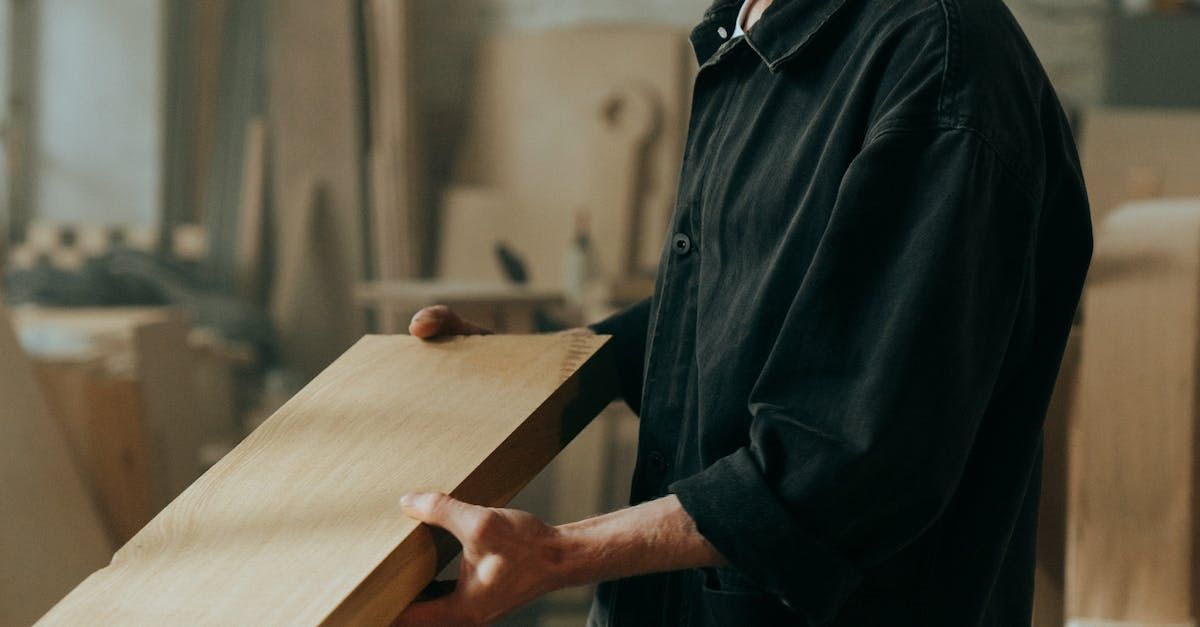Why Carpenter Is Called Carpenter
Carpentry is among the most ancient and venerable of trades, dating back to the very first human structures. From log cabins to skyscrapers, the carpenter's skills have built civilization as we know it. Yet, there is still much to explore about the origins and evolution of this essential profession. Tracing the linguistic roots and semantic journey of the word "carpenter" opens a window into this rich history. By understanding how the name developed across languages and eras, we gain broader insights into material culture and the achievements of countless teachers passing knowledge between generations. As carpentry techniques were transmitted from master to apprentice, the name was handed down, gaining new shades of meaning with each adoption into a fresh linguistic context.

What is the definition of a carpenter?
A carpenter is a skilled craftsperson who performs carpentry, which is defined as the cutting, shaping, and installation of building materials during construction. Carpentry is one of the oldest professions, dating back to the beginnings of human civilization when woodworking skills were crucial for creating shelters, tools, furniture, and other wooden implements.
The essence of carpentry involves working with wood, but over time, the profession has expanded to incorporate other materials like concrete, plastic, steel, and more. A carpenter may work on building projects ranging from houses to ships to infrastructure like bridges. Their work typically entails reading blueprints and plans, measuring/marking materials, cutting and shaping the materials, joining them with tools like saws, drills, and hammers, installing the final products according to specifications, and checking work for accuracy.
While in the past carpentry focused solely on wood, modern carpenters employed a diverse range of building materials, including engineered wood like plywood, composites, plastics, concrete, and steel. A carpenter is responsible for the layout, cutting, installation, and finishing of these materials in structures. They must be adept at using both hand tools and power tools. Fine carpentry skills like joinery, finishing work, and cabinetmaking also fall under a carpenter's expertise. In large construction projects, a carpenter leads teams doing rough carpentry work before trades like electricians and plumbers perform their tasks.
Carpentry requires physical strength, good hand-eye coordination, spatial reasoning skills, attention to detail, problem-solving abilities, and knowledge of mathematics and measurements. A carpenter's work entails a combination of intellectual aptitudes and manual proficiency. Whether utilizing old-fashioned techniques or modern technology, carpenters build the structures we use daily.
What are the origins of the word "carpenter"?
The English word "carpenter" has its roots in the Old French word "carpentier" which originally comes from the Latin word "carpentarius." This Latin term can be broken down into "carpus" meaning "chariot" and "entriculus" meaning "belly." The combination referred to a maker of carriages.
In the Roman era, the Latin "carpentarius" evolved to mean a carriage builder, wheelwright, or chariot maker. This occupation involved skilled woodworking, so the term became associated with artisans who worked with wood. The Old French "carpentier" was derived from this and referred to as an artisan proficient in woodcrafting and carpentry skills.
When the Normans conquered England in 1066 CE, the French language and terminology took hold. "Carpenter" entered the English vocabulary as the word used for skilled woodworkers who built infrastructure, furniture, wagons, ships, and more. While its earliest roots reference vehicles, the word quickly took on the broader meaning of a craftsperson skilled in the cutting and joining wood materials for construction projects.
From its beginnings referring to chariot makers, the evolution of "carpenter" reflected the increasing importance of wood construction as civilization progressed. The term for a profession became synonymous with the primary material worked upon. As the role of a carpenter expanded over centuries, the name evolved into a self-descriptive label denoting a major occupation centered around woodcraft. The modern definition still maintains connections to these linguistic origins.
How did the word "carpenter" evolve from Latin to English?

The word "carpenter" passed through several linguistic transitions on its journey from Latin to English:
Latin - "carpentarius" - A carriage or wagon builder
Old French - "carpentier" - Adapted from the Latin term for a woodworker
Anglo-French - "carpenter" - Entered English vocabulary after Norman conquest
In the Roman era, "carpentarius" referenced makers of wagons and carriages which required woodcrafting skills. This occupational label highlighted a specific craft within the broader profession of working with wood materials in construction.
When the Normans brought their language to England, the Old French term "carpentier" was adapted, referring broadly to any skilled artisan practicing woodworking. The carpentry profession had expanded over centuries to include building infrastructure and furniture in addition to vehicles.
The Anglo-French word "carpenter" was incorporated into English and standardized as the common term for a woodworker. Between the 12th and 14th centuries AD, the meaning evolved from its roots in wagon construction to the general trade of cutting, shaping, and joining wood.
While the earliest origins of "carpenter" referenced a specific wooden item built - chariots - semantic broadening occurred across languages to make it widely applicable to artisans in diverse carpentry trades dealing with wood materials. The modern English definition retains vestiges of these linguistic transitions.
When did "carpenter" first start being used as an occupational surname?
The use of "carpenter" as an occupational surname emerged in the 13th century, as hereditary surnames replaced the previous practice of using only first names. As skilled trades became more formally recognized in medieval England, occupational names like "Carpenter" became commonly adopted by families of craftsmen.
The evolution of surnames was accelerated after the Norman conquest of 1066. Normans increasingly centralized and regulated craft guilds, formalizing training and titles. Surnames were often based on occupations, differentiating the families of blacksmiths, masons, carpenters, and other tradespeople.
In the 12th and 13th centuries, first names like William and John began to be paired with occupational last names like "Will Carpenter" and "John Carpenter." This form eventually coalesced into hereditary surnames passed down through generations. Records of the name Carpenter appear in the famous Domesday Book census commissioned by William the Conqueror in 1086.
By the 1300s, documentation increasingly records "Robert Carpenter" and "Thomas Carpenter," indicating it had become an established hereditary surname. Variants like "John le Carpentere" also appeared, incorporating French linguistic influence. While the origins of many modern surnames trace to this period, Carpenter emerged as clearly occupational, befitting families of skilled woodworkers.
The naming tradition reflected the pride of craftspeople inheriting respected trades. Carpentry's increasing importance in construction, infrastructure, and manufacturing ensured that "Carpenter" became ubiquitous as a surname among English-speaking families. Today, it remains one of the most common occupational surnames from medieval England.
What were some of the early professions that later became known as carpentry?
In early civilizations, professions that involved woodworking were all eventually grouped under the broad definition of carpentry:
Bridge building - Early bridge builders had to work with wood and became skilled carpenters.
Shipbuilding - Shipwrights doing wooden boat construction were early maritime carpenters.
Wagon and carriage making - Wheelwrights evolved from wagon-builders to carpenters.
Infrastructure construction - Homes, buildings, scaffolding all required carpentry.
Furniture crafting - Carpenters became proficient at furniture joinery and cabinetry.
Tool making - Carvers and whittlers crafted early plows, carts, and weapons.
Bridge builders were vital in providing crossings via wood spans before stone masonry was common. Complex shipbuilding similarly relied on specialized wood joinery before the age of steel ships. The wagon and carriage makers who originated the term "carpenter" were expert woodworkers producing chariots and carts.
As civilizations developed, the role of carpenters expanded to erecting wooden shelters, infrastructure, and furnishings. Wood craftsmanship was essential to daily life, from building houses to producing tables and chairs. Specialized carving and joining skills were needed for tools, weapons, plows, and wagons, enabling agriculture and warfare.
Eventually, as the carpentry profession matured and diversified, these assorted woodworking trades were grouped under the umbrella definition of "carpenter." The name commonly refers to the overall craft of cutting, joining, and shaping wood materials in various applications. The modern carpenter thus shares a common heritage with these earlier specialized woodworkers.
How did the role of a carpenter change over the centuries?
The role of a carpenter has evolved considerably over centuries alongside advancement in tools, materials, and woodworking techniques:
- Ancient - Hand tools, timber framing, basic furniture/shelters
- Medieval - Complex joints, decorative woodwork, infrastructure
- Renaissance - Intricate furniture, ornate interiors, transoms
- Industrial - Mechanization, mass production, new materials
- Modern - Power tools, steel framing, engineered wood
In ancient times, carpenters used basic hand tools like axes, adzes, chisels, and drills, working primarily with timber framing for buildings and basic furniture and tool creation. Their role focused on the provision of basic wooden structures and implements.
In the Middle Ages, carpenters gained expertise in complex wooden joints and decorative woodwork like ornate beams, paneling, doors, and church interiors. The profession became highly skilled at detailed architectural wood elements.
During the Renaissance, carpenters demonstrated artistry, producing elaborate furniture with inlaid designs, fine carving, marquetry, and integral joints. Intricate wooden architectural features like transoms became common.
Mechanization in the Industrial Era increased factory production of furniture, machines, and building parts. Assembly-line millworking and mass-produced wire nails and lumber enabled a shift from hand-crafted to machine-made carpentry.
In modern times, carpenters utilize advanced power tools, steel framing, and engineered wood products like plywood and composites. Computer-aided design and manufacturing shape carpentry's future. The profession continues advancing alongside technology.
So, while carpentry retains traditional woodworking at its core, its practices have evolved across changing historic eras to shape our built environment.
What distinguishes the work of a carpenter from other construction professions?

While carpenters share some overlapping duties with related construction trades, certain key distinctions characterize their primary roles and skills:
- Materials expertise - Deep knowledge of wood compared to other builders
- Joinery and finishing - Fine woodworking like joints, trim, furniture
- On-site assembly - Framing, installation, fitting of wood elements
- Hand and power tools - Extensive hands-on tool usage and mastery
- Blueprint reading - Understanding plans and specifications
- Math and spatial skills - Precise measurement and leveling abilities
The carpenter possesses unmatched expertise working with wood materials compared to professions like brick masons, electricians, or glaziers. Years of experience give them instinctual knowledge of wood's properties and behavior.
While other trades have some surface-level carpentry duties, fine joinery, finishing, trim work, and furniture construction fall under the carpenter's exclusive purview. They perform wood craftsmanship others lack.
Carpenters translate plans into physical structures. They assemble, erect, and install on-site, converting drawings into framed walls, floors, and roofs. Carpentry entails fitting pieces together.
From chisels to saws to drills, carpenters are distinguished by their mastery of hands-on woodworking tools. They also utilize specialized power tools other trades seldom require.
Understanding technical drawings is fundamental to carpentry work. Carpenters possess specialized knowledge of blueprint marks, dimensions, sections, and plans.
Math skills allow carpentry calculations essential for precise measurement, leveling, and spatial reasoning to fit complex assemblies together flawlessly.
In summary, well-rounded
carpentry expertise sets the profession apart from narrowly focused specialties within the construction industry.
How has the meaning of "carpenter" expanded over time?
The meaning of "carpenter" has progressively expanded to encompass broader occupations working with an increasing variety of materials:
- Ancient - Woodworkers specializing in timber construction
- Medieval - Skilled craftsmen doing decorative architectural woodwork
- Renaissance - Master artisans specializing in ornate furniture
- Early Modern - Woodwork machine operators in factories
- Industrial - Assembly of buildings using varied new materials
- Modern - Skilled technicians integrating wood, metal, plastic, composites
Originally, carpenters focused on structural timber framing and rudimentary wood construction. The meaning was restricted to a narrow specialty.
In the Middle Ages, carpenters demonstrated great skill in carving architectural ornamentation for castles, cathedrals, and manor houses. The term grew to include artisanal abilities.
During the Renaissance, carpenters exemplified the highest levels of fine woodworking in crafting elaborate cabinetry, furniture, and decor. "Carpenter" implied mastery of an artistic medium.
The rise of manufacturing saw carpenters transitioning to factory production and machine operation. The meaning shifted from individual artisan to industrial worker.
With new construction materials like concrete, steel, and drywall, carpenters retained the duties of assembling buildings as part of the process. The definition expanded beyond just wood.
Today, carpenters integrate traditional woodworking with new engineered materials and composites. The term encompasses broad skills applied to varied materials.
Over centuries, "carpenter" has progressively expanded from a specialist trade to a widely inclusive building profession applying traditional techniques to modern materials. The meaning has evolved to stay relevant.
What are some famous historical carpenters?
Throughout history, many pioneering carpenters have displayed the profession's artistry and innovations:
- Filippo Brunelleschi - Designed revolutionary dome for Florence Cathedral
- Noah - Biblically built the Ark according to God's instructions
- Joseph - Biblical carpenter, the earthly father of Jesus Christ
- Nicholas Goya - Chief carpenter of Spanish Armada who circumnavigated globe
- Thomas Chippendale - Legendary 18th century English furniture designer
- Christopher Wren - Architect who rebuilt London after Great Fire, started as a carpenter
- George Washington - Young Washington was trained as an amateur surveyor and carpenter
- Frank Lloyd Wright - Designed famous structures like Fallingwater with carpentry roots
- Harrison Abram - African American carpenter, patented an improved steam boiler
- Elizabeth Magie - Co-founded National Women's Trade Union League for Carpenters
These examples illustrate famous carpenters who advanced architecture and design, exercised scriptural carpentry skills, traveled to uncharted areas, created iconic masterpieces, and broke down barriers in the trade. The profession has attracted innovative and unconventional trailblazers throughout its history. From foundational builders like Noah to revolutionary architects like Brunelleschi, carpenters have shaped civilization from ancient times into the modern world. The trade's enduring legacy continues to be carried forward today by both prominent historical figures and unsung artisans.
How has the carpentry profession evolved into modern times?
Carpentry has evolved from ancient origins into a dynamic, technology-driven building profession:
- Materials - Wood to engineered products, steel, composites, plastics
- Tools - Hand tools to power tools, laser cutters, 3D printers
- Techniques - Timber framing to advanced joining, automated production
- Specialties - Furniture, finish, framing, cabinetry, specialized trades
- Training - Apprenticeships to vocational schools, college programs
- Sustainability - Green building materials, hybrid techniques, efficiencies
- Safety - Standards, equipment, oversight to reduce hazards
- Business - Solo workshops to unionized contractors bid on projects
Whereas carpentry once focused on artisanal hand-crafting of structures from solid wood, today, carpenters integrate various materials using advanced mechanized tools, implementing hybrid construction techniques. Specializations have multiplied, and training is more standardized.
Sustainable building and emphasis on safety are new evolutions. Carpentry has progressed from isolated regional skilled tradespeople to a globalized, regulated industry still retaining its traditional roots. Modern carpenters fuse deep material knowledge, artisanal wisdom, and cutting-edge technologies into dynamic 21st-century best practices. The profession builds upon its heritage even as it swiftly adapts to meet present and future demands.
Conclusion
In summary, the evolution of “carpenter” reflects the increasing sophistication of woodworking across cultures and centuries as specialized trades merged under a common name, denoting mastery of this fundamental material. The word’s persistence as both an occupational title and surname indicates the enduring prestige of carpentry as a creative, economically vital craft. Though its tools and techniques have advanced, carpentry remains rooted in traditions of material intimacy, precise workmanship, and structural vision spanning ages. The lexicon carries these connotations, echoing carpenters’ legacy of building shelters, wagons, furniture, and monuments that formed the backdrop of civilization. Their innovations built our shared world as we know it.
West London's best Handyman services
Reliable all round services including
Curtains Fitting And Installation
useful links

We are helping to save the rainforest,
one acre at a time

Mentoring businesses with the British Library

Helping create an ethical world

Insured by Simply Business













